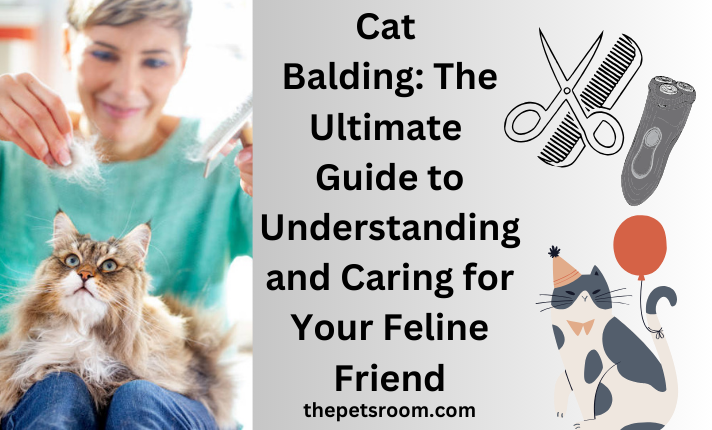Cat balding, also called feline alopecia, is the term used to describe a cat’s hair loss. It can manifest in a variety of ways, including patches or symmetrical hair loss, and can be brought on by several underlying causes. For therapy and prevention to be effective, the underlying cause must be identified and addressed. Feline alopecia, the scientific term for cat baldness, is a frequent disorder in which cats lose all or part of their hair. Given that a cat’s coat frequently serves as a reflection of its general health, this can be upsetting for both the owner and the pet.
There are several other underlying reasons why cats bald; these include behavioral disorders, environmental variables, and medical conditions such allergies, infections, and hormone abnormalities. Determining the exact cause is essential to choosing the right course of action and maintaining the cat’s health. The numerous causes, signs, and viable treatments for cat baldness will all be covered in this article.
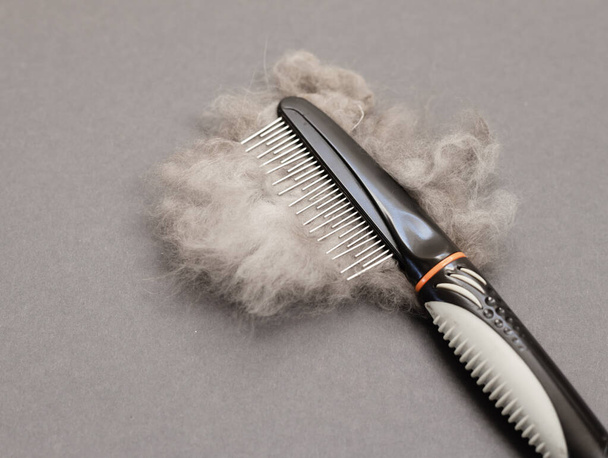
Causes Of Cat Baldness
Health Issues
Food Allergies: Certain foods can cause allergies in cats, which can result in irritated skin and hair loss. Dairy, seafood, and meat are common allergies.
Environmental Allergies: Cats may experience allergic reactions to mold, dust mites, pollen, and other environmental elements, which can irritate their skin and cause hair loss.
Parasites
Fleas: Especially in the areas around the neck, back, and tail, flea bites can result in severe allergic responses and itching that causes hair loss.
Mites: By burrowing into the skin, mites like Scabies and Demodex can cause irritation, redness, and hair loss.
Infections
Bacterial Infections: In regions of the skin that are damaged or irritated, secondary bacterial infections can arise and cause more discomfort and hair loss.
Fungal infections: A common fungal illness in cats is ringworm, which results in red, scaly skin and circular regions of hair loss.
Hormonal Disproportions
Hyperthyroidism: An excess of thyroid hormones can cause various skin problems, including hair loss.
Cushing’s disease: Excessive cortisol production can cause hair loss and skin thinning.
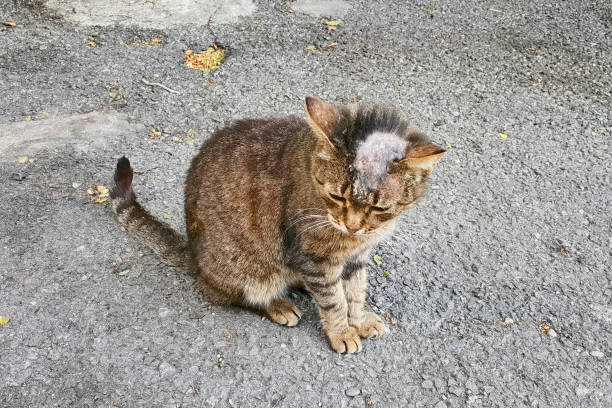
Genetic Predispositions
Due to genetic causes, some breeds may be more prone to hair loss than others.
Behavioral Problems:
Over-tidying Stress or Anxiety: When cats experience stress or anxiety, they may comb their fur excessively, which can cause hair loss, especially on the sides, tummy, and legs.
Trauma inflicted by oneself Bleaching, biting, or scratching too much because of behavioral problems can lead to skin damage and bald areas.
Outside Factors:
Inadequate nourishment: A diet deficient in vital nutrients might cause skin and coat health issues, which can culminate in hair loss.
Environmental Irritants: Skin responses and hair loss can result from exposure to chemicals, dust, or other irritants.
Bald Spots on Cat
Typical Sites:
Behind the Ears: Frequently connected to ear infections or allergies.
Often observed with flea infestations or allergic reactions around the back and sides.
Inner thighs and abdomen: Often associated with excessive grooming as a result of allergies or stress.
The area around the base of the tail is usually linked to allergies to fleas.
Patterns and Appearance:
Patchy Hair Loss: Unusual bald patches that could be brought on by parasites, allergies, or diseases.
Hair loss that is symmetrical, or equal on both sides of the body, is frequently caused by hormone imbalances.
Sores or Redness: Irritated, inflammatory skin that may indicate the development of secondary infections.
Scaly or crusty skin: May be a sign of severe allergic responses or fungal diseases such as ringworm.
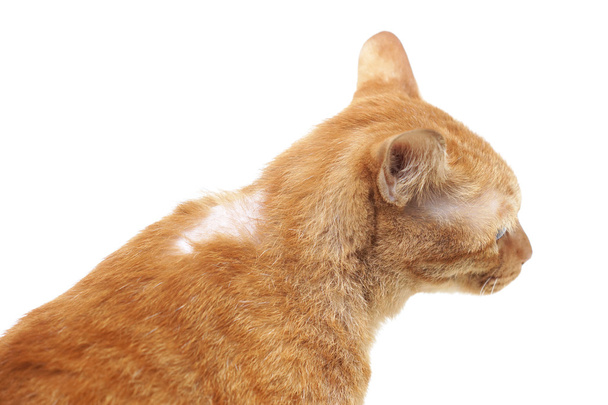
Medical Treatments for Balding of the Cat:
Drugs:
Antibiotics: Medicated to treat bacterial infections that irritate the skin and cause hair loss.
Antifungals: Used to treat ringworm and other fungal infections.
Treatments for mites and fleas: Using flea preventatives and treatments for mites on a regular basis can aid in the removal of these parasites.
Frequent Parasite protection Program: Keeping up a regular parasite protection program helps lower the chance of infestations.
Hormone Treatment:
Treatments for hyperthyroidism include medications that control thyroid hormone levels.
Cortisol Management: Cushing’s disease treatments aimed at regulating cortisol levels.
Behavioral Interventions:
Reducing tension: Toys, scratching posts, and climbing frames are examples of environmental enrichment activities that can help lower tension and boredom.
Pheromone diffusers: Items such as Feliway can aid in establishing a relaxing atmosphere.
Veterinary behaviorist consultation for behavioral therapy: expert advice to address underlying behavioral problems.
Interventions related to nutrition:
Modifications to Diet:
Hypoallergenic Diets: Diets tailored specifically to address dietary sensitivities.
Balanced Nutrition: Making sure the food your cat eats is full of the nutrients they need to have healthy skin and coat.
Omega-3 and Omega-6 Fatty Acids: Good for inflammation reduction and skin health supplements.
Preventing Cat Hair Loss with Routine Veterinary Check-ups:
Regular physical examinations to identify and treat such problems early.
Keeping the Environment Clean: Cleaning on a regular basis helps minimize exposure to allergens and irritants in the surroundings.
Feeding a balanced meal that satisfies all nutritional needs is considered proper nutrition.
Frequent Grooming: To avoid matting and eliminate stray hair, brush your hair frequently.
Keeping an Eye Out for Early Indications of Stress or Illness: Noticing behavioral or physical changes and taking quick action as necessary.
Cat Hair Loss Treatment at Home:
Topical Interventions:
- Medicated shampoos: shampoos with antibacterial or antifungal properties to treat skin infections.
- Coconut oil or aloe vera are natural ways to relieve sore skin.
- Environmental Management: Maintaining a Clean Living Space: Cleaning on a regular basis reduces allergens and irritations.
- Reducing airborne allergens that could result in skin responses by using air purifiers.
- Reducing Stress: Establishing a Calm Environment by Creating Quiet Spots and Hides.
- Interactive Play: Playing frequently might help lower stress and anxiety levels.
- Dietary Management: Providing High-Quality Food: Making sure the cat eats a diet high in vital nutrients.
- Omega-3 fatty acids can be added to supplements to enhance skin health.
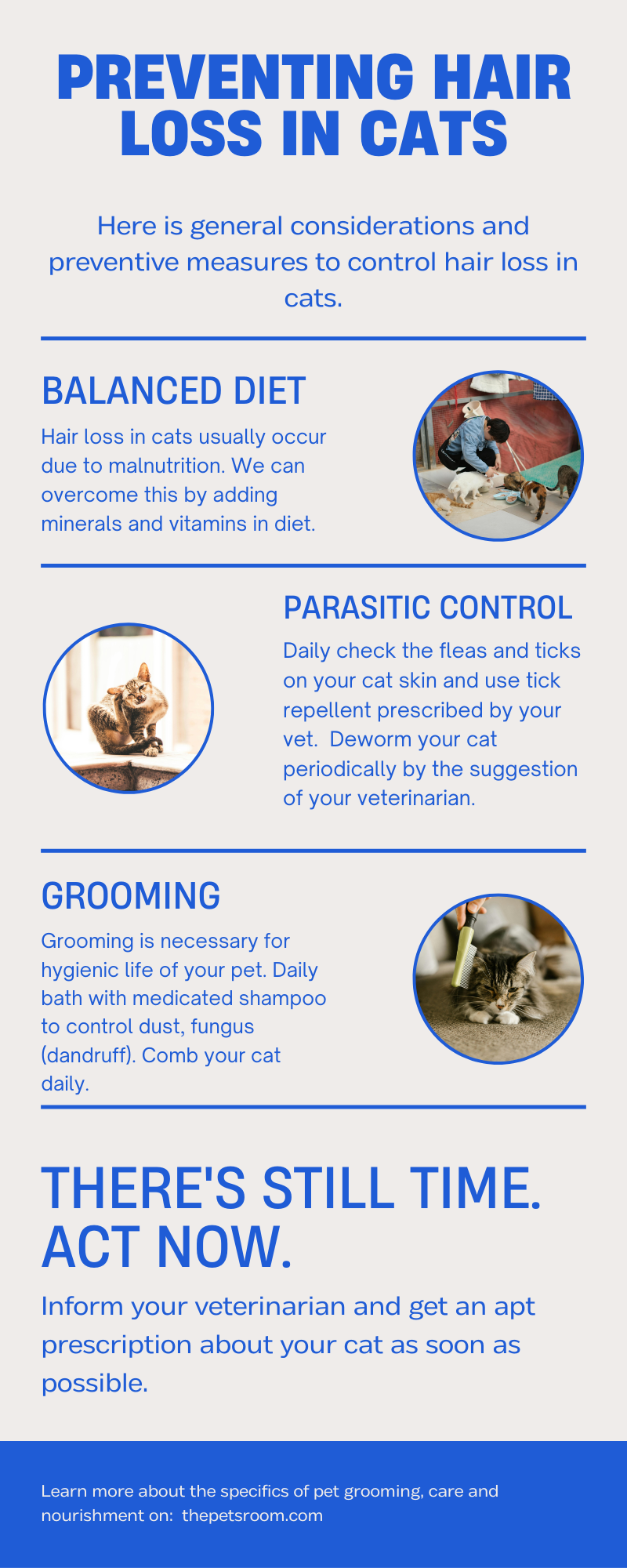
FAQS
What are the causes of Cat Balding?
The most frequent causes of cat balding are parasites, specifically fleas, mites, and ticks. Specifically, flea bites can result in severe allergic responses and itching that can cause hair loss.
- Allergies: Contact irritants, pollen, dust mites, and food items are among the environmental elements that cats may be allergic to. Itching brought on by allergies frequently results in hair loss.
- Diseases: Fungal and bacterial diseases, including ringworm, can cause skin irritation and hair loss.
- Hormonal imbalances: Disorders such as Cushing’s disease and hyperthyroidism can result in hair loss or thinning.
- Stress and worry: Excessive grooming brought on by stress or worry can cause a noticeable loss of hair. This is frequently observed in cats that are under stress or in environments that are changing.
- Genetic Factors: Certain breeds experience alopecia due to a genetic predisposition to hair loss or to specific situations.
Why Is My Cat’s Neck and Leg Hair Losing?
Particularly worrying hair loss can occur on the legs and neck. Typical causes include:
- Fleas: To reduce flea discomfort, cats frequently bite and groom the areas near their necks and legs.
- Allergies: Localized itching and hair loss can result from environmental and dietary allergies in these locations.
- Fungal or bacterial infections can cause patchy hair loss by focusing on particular locations.
- Stress or Over-Grooming: When under stress or anxiety, cats may groom these easily accessible regions excessively.
- Trauma or Injury: As the skin heals, bites, scratches, and other traumas to these regions may cause localized hair loss.
What is the treatment Of Cat Balding?
Topical Treatments for Cat Baldness at Home
- Shampoos with medication: Follow a veterinarian’s advice and use antifungal or antibacterial shampoos.
- Natural Solutions: Use coconut oil or aloe vera to relieve inflamed skin.
- Environmental Management: Clean Living Space: Keep your house tidy on a regular basis to reduce allergens and irritants.
- Air Purifiers: Reduce airborne allergies by using air purifiers.
- Reducing Stress: Establish a Calm Environment Provide secluded places and peaceful spaces.
- Interactive Play: Play frequently to help you feel less stressed and anxious.
- Dietary Management: Premium Food make sure your cat eats a diet high in vital nutrients.
- Supplements: To improve skin health, think about include omega-3 fatty acids.
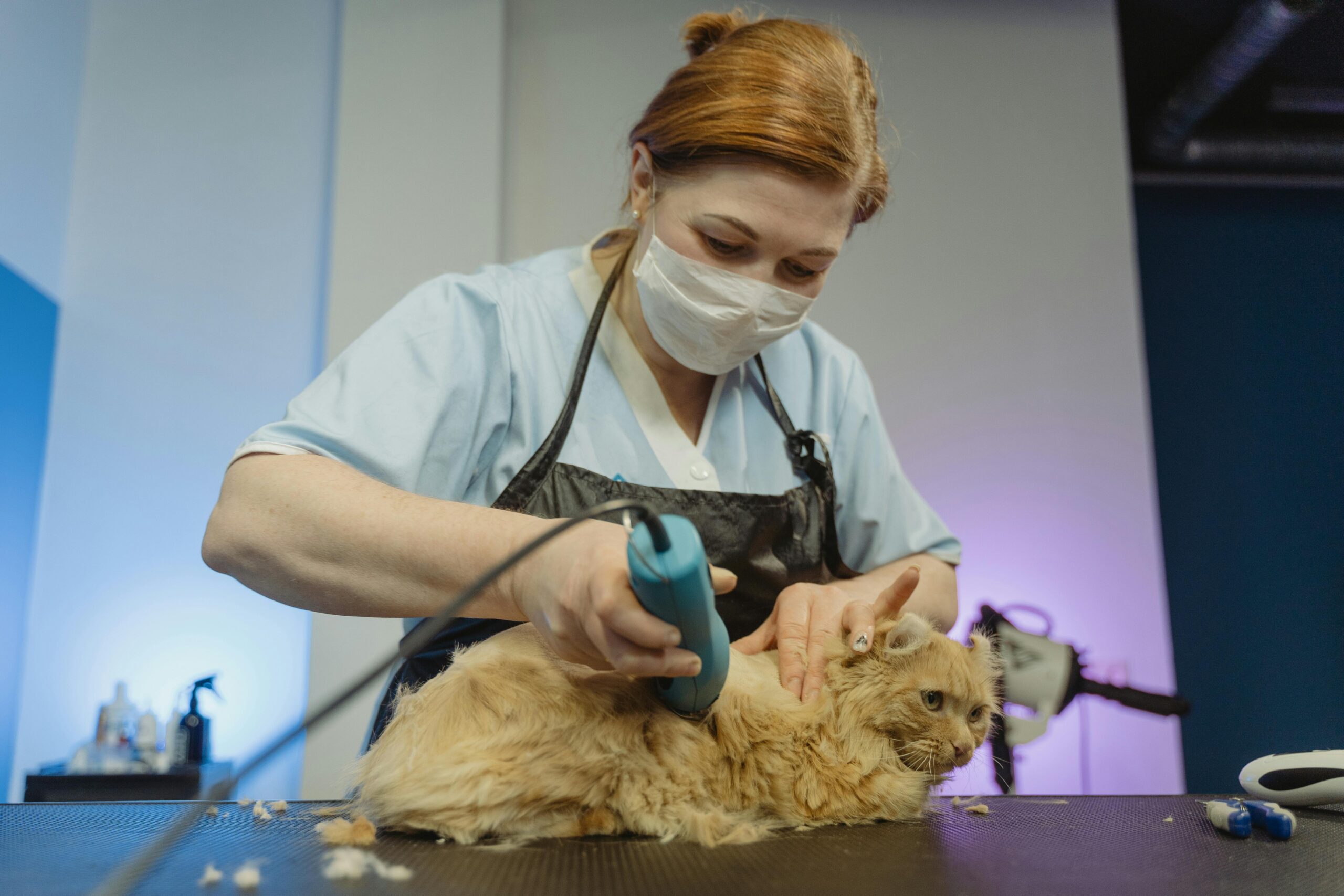
How Is Cat Hair Loss Controllable?
- Frequent veterinary check-ups: Schedule routine examinations to identify and treat possible problems early.
- Keep the Environment Clean: Regular cleaning helps to lower the amount of allergens and irritants in the air.
- Sufficient Nutrition: Provide a well-rounded food that satisfies all requirements.
- Frequent Grooming: Regular brushing helps to keep matting at bay and remove stray hair.
- Control Parasites: Regularly use flea and tick repellents.
- Keep an eye out for early warning signs
- Keep an eye out for behavioral or physical changes, and take quick action as necessary.
- Reduce Stress: To reduce stress, create a stable, stimulating workplace.
Conclusion
In conclusion, keeping your feline buddy healthy and happy requires an understanding of the reasons of cat balding and taking appropriate action to correct them. Numerous medical disorders, like as allergies, infections, and hormone imbalances, as well as behavioral problems and environmental variables, can cause feline alopecia. You may effectively control and prevent hair loss in your cat by keeping a careful eye on their health, giving them a balanced diet, creating a stress-free environment, and getting regular veterinarian care. In order to treat the underlying reasons, avoid subsequent issues, and maintain the health and vibrancy of your cat’s coat, early detection and management are essential.
Home treatments and preventative measures play a significant role in controlling cat hair loss. Incorporating proper grooming practices, maintaining a clean living environment, and utilizing natural remedies can alleviate mild symptoms and support overall skin health. However, it is crucial to consult with a veterinarian for accurate diagnosis and appropriate treatment plans tailored to your cat’s specific needs. With a combination of professional guidance and diligent care at home, you can help your cat lead a comfortable, healthy life free from the distress of excessive hair loss.

